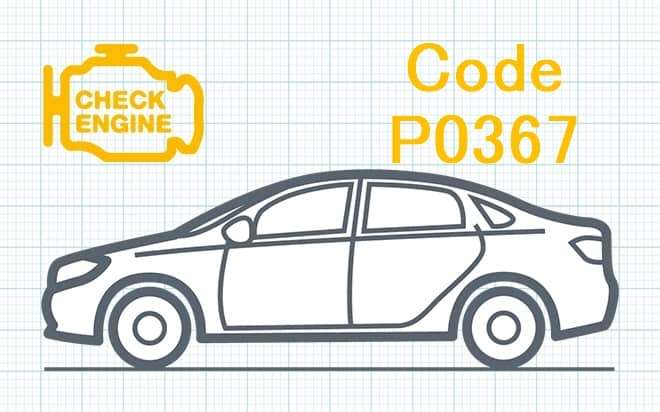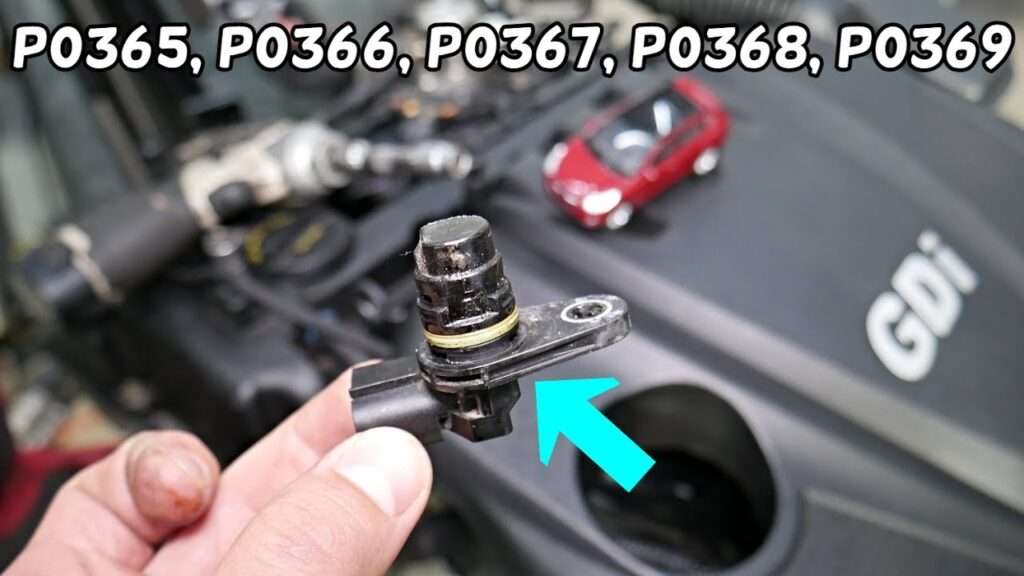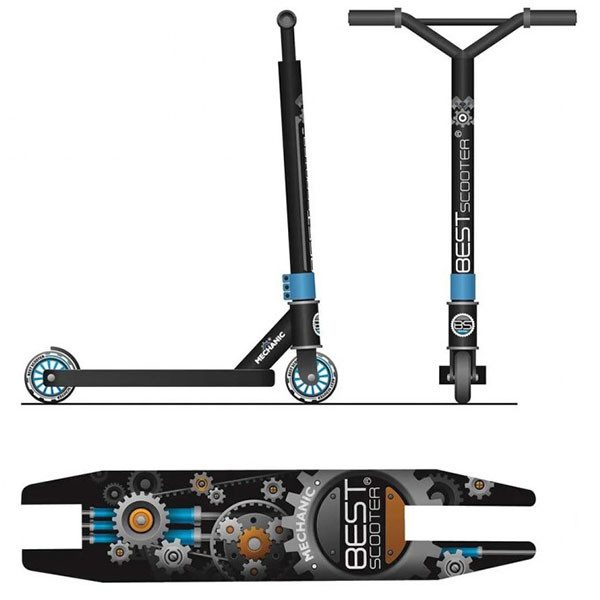
P0367 Camshaft Position Sensor Circuit Low (Sensor “B”, Bank 1)
Content
P0367 – OBD-II Trouble Code Technical Description
Trouble code P0367 indicates that the vehicle's PCM has detected that the voltage in the camshaft position sensor “B” circuit (bank 1) is too low.
What does trouble code P0367 mean?
Trouble code P0367 indicates a problem with the signal or voltage from the camshaft position sensor (sensor "B", bank 1). This code means that the engine control module (ECM or PCM) has detected that the camshaft position sensor circuit voltage is below acceptable levels. This usually indicates a problem with the sensor or its surroundings, such as a broken wire, short circuit, improper power supply, or other electrical problems.

Possible reasons
Some possible causes for this P0367 trouble code:
- Faulty camshaft position (CMP) sensor: The sensor may be damaged or not properly powered, causing the signal to be read incorrectly.
- Open or short circuit in the sensor circuit: Problems with the wiring connecting the sensor to the engine control module (ECM or PCM) can cause P0367.
- Incorrect power supply or sensor ground: Incorrect or insufficient sensor power supply can also cause this error.
- Problems with the engine control module (ECM or PCM): In rare cases, the problem may be related to the engine control unit itself, which does not correctly process the signals from the sensor.
- Mechanical problems with the sensor: For example, the sensor may be incorrectly installed or damaged due to external factors.
- Problems with other ignition or engine control components: For example, problems with the ignition system, electrical circuits, or other sensors may affect the performance of the camshaft position sensor.
To accurately determine the cause of the P0367 code, it is recommended to conduct a detailed diagnosis of the vehicle using specialized equipment or contact a qualified mechanic.
What are the symptoms of a fault code? P0367?
Symptoms for DTC P0367 can vary depending on the specific cause and nature of the problem, some common symptoms that may be experienced include:
- Check Engine: The appearance of the “Check Engine” light on the instrument panel is one of the most common symptoms of a P0367 code.
- Unstable engine operation: A faulty camshaft position sensor can cause the engine to run erratically, such as shaking, rough running, jerking or even stalling.
- Loss of power: Incorrect reading of the signal from the CMP sensor may result in loss of engine power, especially when accelerating or under load.
- Ignition misfires: A faulty sensor can cause misfire, which manifests itself as jerking during acceleration or a floating idle.
- Deterioration in fuel efficiency: Improper operation of the camshaft position sensor may result in increased fuel consumption due to improper fuel/air mixture or improper fuel injection timing.
- Deterioration of engine dynamics: There may be a general deterioration in engine dynamics, including increased acceleration time or throttle response.
It is important to remember that these symptoms can occur to varying degrees and depend on the specific cause of the P0367 code and other factors. If you notice any of these symptoms, it is recommended that you contact a qualified technician to diagnose and repair the problem.
How to diagnose a fault code P0367?
To diagnose DTC P0367, we recommend following these steps:
- Checking Error Codes: Use a diagnostic scan tool to read all trouble codes including P0367. This will help identify other problems that may be related to the P0367 code.
- Visual inspection of the CMP sensor: Check the camshaft position (CMP) sensor for damage, contamination or oil leaks. Make sure it is properly secured and connected.
- Checking wiring and connectors: Inspect the wiring connecting the CMP sensor to the engine control module (ECM or PCM) for opens, shorts, or corrosion. Check the connectors for damage and make sure there is good contact.
- Sensor resistance measurement: Use a multimeter to measure the resistance of the CMP sensor according to the manufacturer's specifications. Incorrect resistance may indicate a faulty sensor.
- Checking the sensor signal: Using an oscilloscope or diagnostic scanner, check the signal from the CMP sensor to the ECM or PCM. Make sure the signal is stable and within expected values.
- Checking the power system and ground: Make sure the CMP sensor is receiving proper power and has a good ground connection.
- Additional tests and diagnostics: If necessary, perform additional tests such as checking the ignition system, fuel injection system and other engine management system components.
- Replacing the sensor or repairing the wiring: If the CMP sensor or wiring is found to be faulty, replace the sensor or repair the wiring according to the diagnostic results.
After completing these steps, it is recommended to take a test drive to verify that the problem has been successfully resolved. If the P0367 error code appears again, you may need more in-depth diagnosis or professional help.
Diagnostic errors
When diagnosing DTC P0367, the following errors may occur:
- Errors in data interpretation: Incorrect understanding or interpretation of data received from the CMP sensor or other systems may lead to incorrect conclusion about the causes of the P0367 code.
- Missing diagnostics: Skipping certain diagnostic steps or not paying enough attention to detail may result in missing factors that may be related to the problem.
- Diagnostics without the necessary equipment: Some tests, such as resistance measurements or signal analysis using an oscilloscope, require special equipment and failure to do so may result in an incomplete or unreliable diagnosis.
- Wrong solution to the problem: Selecting the wrong method to repair or replace components may result in additional problems or incomplete results.
- Insufficient expertise or experience: Inexperience in diagnosing electronic engine systems can lead to incorrect determination of the causes of the error and incorrect selection of methods for troubleshooting.
- Hardware or software problems: Errors may occur due to faulty or incorrectly calibrated hardware or software used.
It is important to be aware of these possible errors and contact qualified technicians or service centers with sufficient experience and equipment to accurately and effectively diagnose and correct the problem.
How serious is the fault code? P0367?
Trouble code P0367 is quite serious as it indicates a problem with the camshaft position (CMP) sensor. Incorrect operation of this sensor can result in engine roughness, loss of power, increased fuel consumption, and other serious problems with engine performance and efficiency.
While in some cases the problem can be resolved quite simply by replacing the sensor or correcting the wiring, in other cases the cause may be more complex and require more extensive intervention or replacement of other engine components.
It is important to resolve the cause of the P0367 code as soon as possible to avoid further damage and ensure normal engine operation. Problems with the camshaft position sensor can lead to serious consequences, including loss of vehicle control and even accidents in some cases.
Therefore, it is recommended that you contact a qualified mechanic or service center for diagnosis and repair if you encounter trouble code P0367. Only an experienced specialist will be able to correctly determine the cause and fix the problem, ensuring the safety and reliability of your car.
What repair will help eliminate the code? P0367?
Troubleshooting DTC P0367 may include the following repairs:
- Replacing the Camshaft Position (CMP) Sensor: If the camshaft position sensor is identified as the source of the problem, it should be replaced with a new one that matches the original sample.
- Checking and replacing wiring and connectors: The wiring connecting the camshaft position sensor to the engine control module (ECM or PCM) can also be a source of problems. Check wiring for breaks, shorts or other damage. If necessary, replace damaged wires or connectors.
- Checking and servicing the rotor and steering wheel: The rotor and steering wheel that the CMP sensor interacts with must be in good condition. Check them for wear, damage or dirt. If problems are found, they should be replaced or serviced.
- Checking the engine control module (ECM or PCM): In rare cases, the problem may be with the engine control unit itself. Check it for any malfunctions or damage. If problems are found with the ECM or PCM, they should be replaced or repaired.
- Additional diagnostics and maintenance: In some cases, the cause of the P0367 code may be more complex and require additional diagnostics or service to other engine components such as the ignition system, fuel injection system, and others.
After performing these repairs, it is recommended that you take a test drive to verify that the problem has been successfully resolved. If DTC P0367 no longer appears, the problem has been successfully resolved. If the problem persists, it is recommended that you contact a professional mechanic or service center for further diagnosis and repair.
P0367 – Brand-specific information
Trouble code P0367 can have different meanings depending on the specific make of the car, several examples with their meanings:
- Chevrolet: P0367 – Camshaft Position Sensor B – Signal Low.
- Ford: P0367 – Camshaft Position (CMP) Sensor – Low Signal.
- Toyota: P0367 – Camshaft sensor B – signal low.
- Honda (Honda): P0367 – Camshaft sensor “B” – low signal.
- Nissan (Nissan): P0367 – Camshaft Position Sensor B – Signal Low.
- BMW: P0367 – Camshaft position sensor “B” – low signal.
These are just a few examples, and the meaning of the P0367 code may vary depending on the specific model and year of the vehicle. For accurate information, consult the vehicle manufacturer's documentation or a qualified service center.

